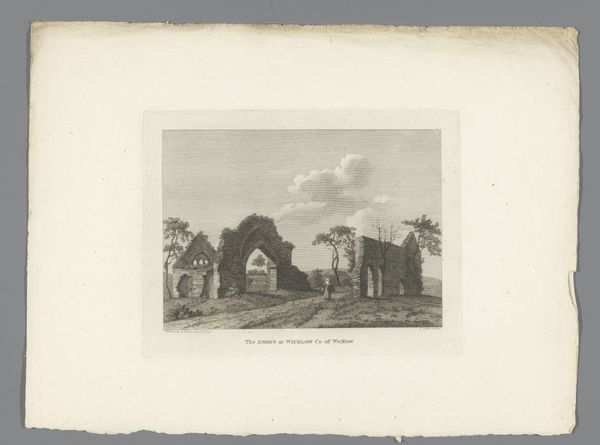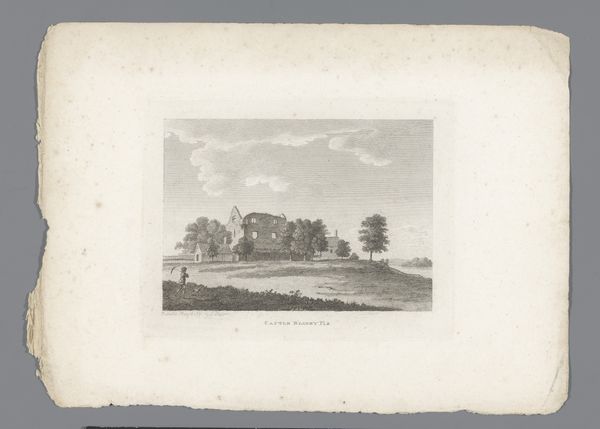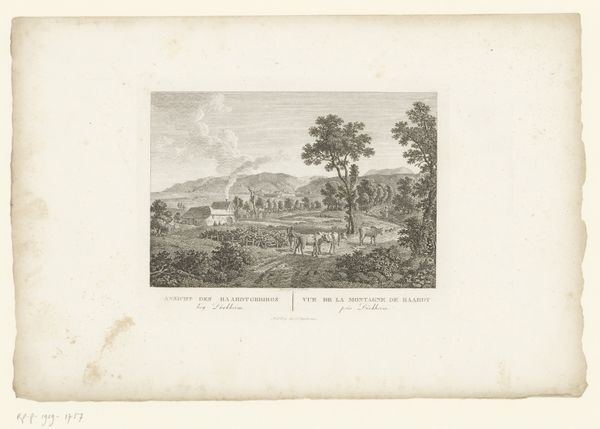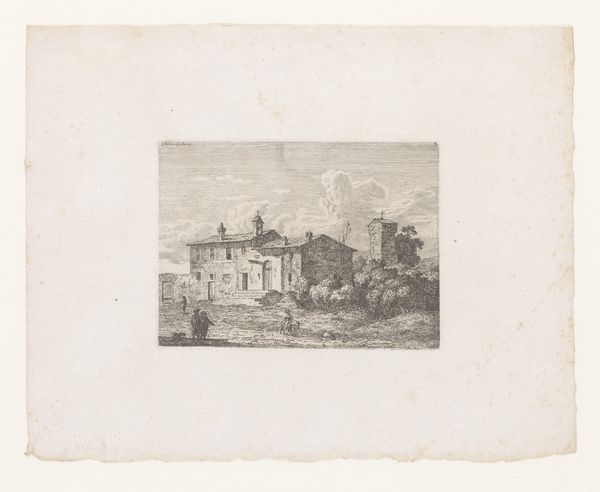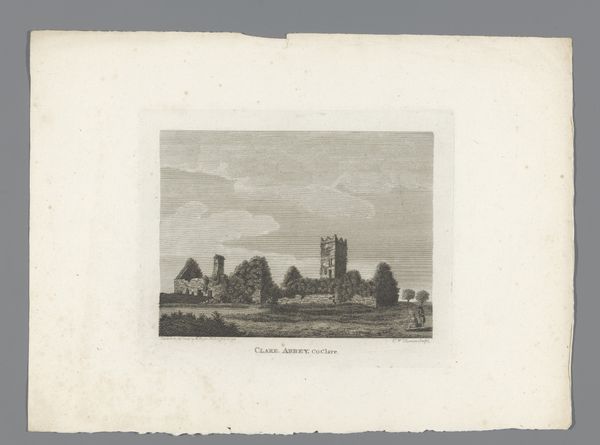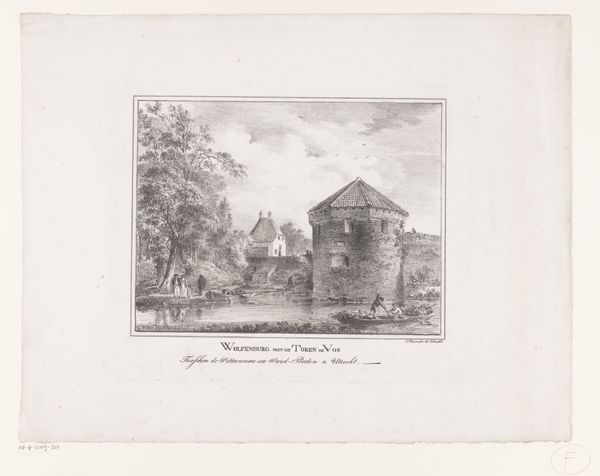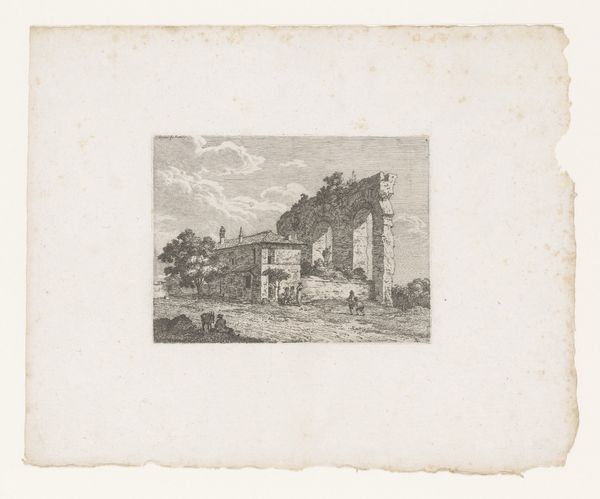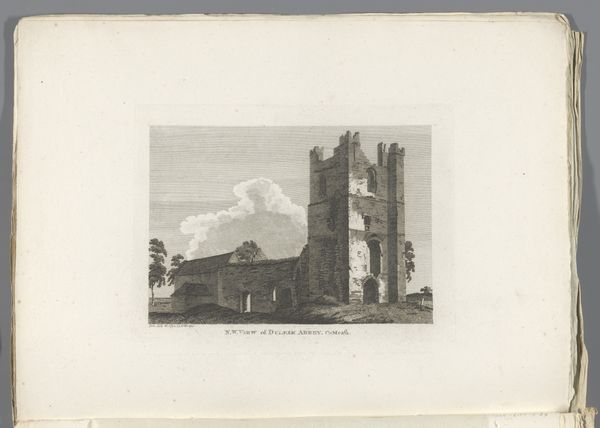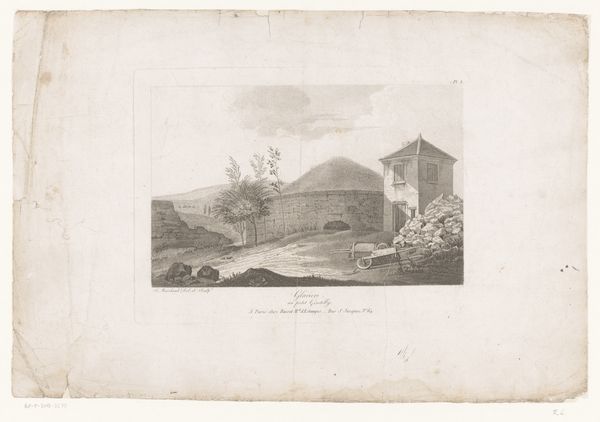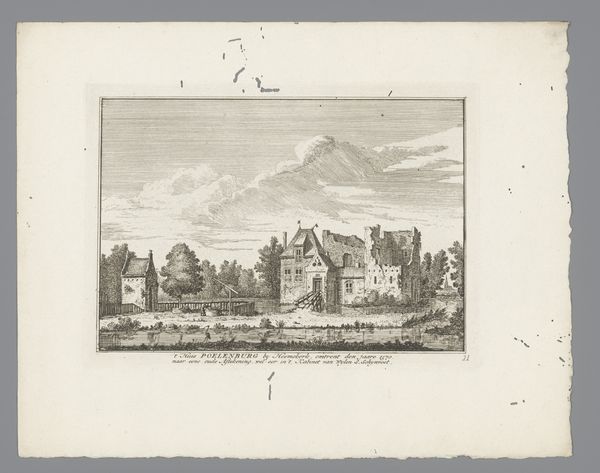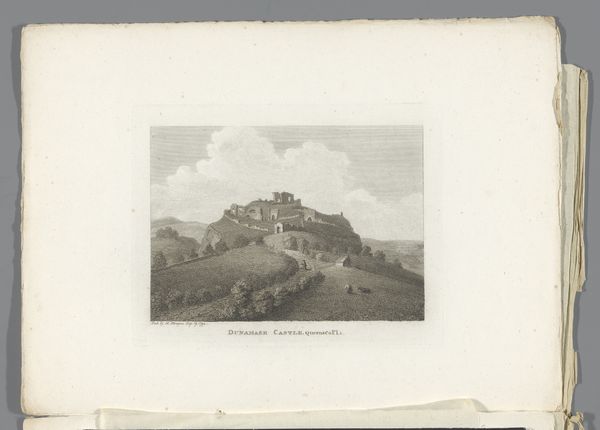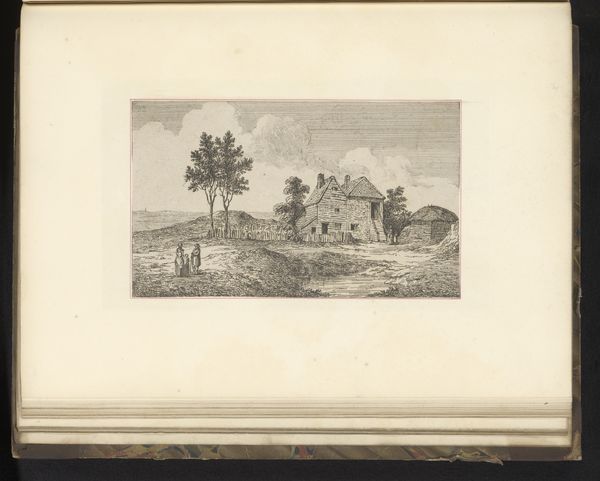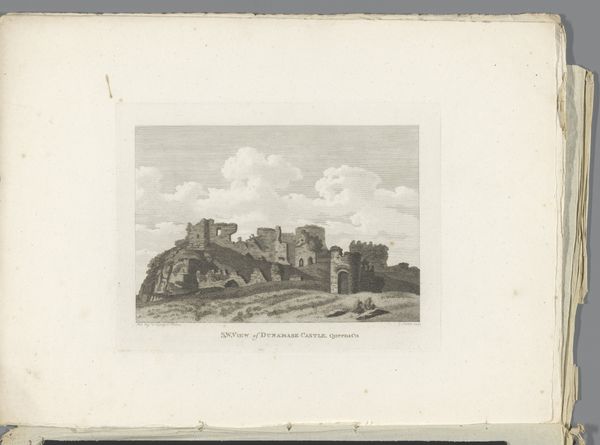
print, engraving
# print
#
landscape
#
romanticism
#
history-painting
#
engraving
Dimensions: height 154 mm, width 198 mm
Copyright: Rijks Museum: Open Domain
Curator: Oh, I am immediately transported to some lost gothic romance just looking at this engraving! So ethereal and haunted, all at once! Editor: It’s "Gezicht op de ruïnes van de abdij van Cong," or, “View of the Ruins of Cong Abbey," potentially from 1794. It appears to be an engraving that, with its romanticist style and subject, reflects a burgeoning interest in landscape and historical themes. The past, quite literally in ruins, becomes a site of artistic exploration. Curator: Ruins are, of course, the ultimate invitation, aren’t they? Imagine the lives that have passed through those crumbling archways. There’s a tree snuggling up to the remaining walls...it whispers stories. I swear! And the sky, the vast expanse... almost mocks the building’s fall. Editor: Absolutely. Consider the context. The late 18th century saw increased colonial activities coupled with political upheaval across Europe, creating conditions that gave ruins an emblematic value. They are symbols of mortality, reminders of imperial hubris and the ephemerality of power structures. Curator: I feel that so deeply here. The human need to create versus the relentless forces of nature…it is a potent drama playing out in stone. Editor: Notice too the technical precision involved in an engraving. Lines must be laid deliberately and the entire composition thought through and rendered in monochrome with few tonal graduations. Such prints also played a crucial role in the dissemination of knowledge. Engravings of ancient sites and historical places became valued commodities to circulate as political as much as aesthetic discourses. Curator: Like visual shorthand, the ruins become almost... like hashtags of their day? And yet, there is such delicate, mindful artistry here! The composition is like poetry—stately verticals battling the horizontal spread, all within the confines of its very paper prison. It makes me crave wild open spaces. Editor: Exactly. By evoking emotion tied to place and time, it creates and informs cultural and political ideas of landscape in unique ways, even within a commercial exchange. This print offers us more than just a pretty picture, wouldn’t you say? Curator: Definitely more, perhaps questions regarding endurance, legacy and visual memory…a whole history etched into this scene, inviting a reflective pilgrimage in the mind's eye. Editor: And through circulation, an artifact can play its own critical part. What we’re looking at becomes itself, another, quieter monument.
Comments
No comments
Be the first to comment and join the conversation on the ultimate creative platform.
